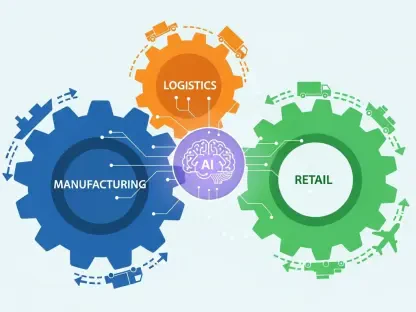In an era where healthcare systems worldwide grapple with inefficiencies, rising costs, and the lingering impacts of a global pandemic, Verily, a life sciences subsidiary of Alphabet, emerges as a transformative force through its pioneering use of artificial intelligence (AI). The urgency for scalable, precise, and cost-effective solutions has never been more pronounced, with chronic diseases burdening economies and public health crises demanding rapid responses. Verily’s strategic pivot to AI-driven technologies positions it at the forefront of addressing these challenges, promising a future where healthcare delivery is not only more efficient but also deeply personalized. From chronic care management to clinical research and disease surveillance, Verily is crafting tools that aim to dismantle systemic barriers. This exploration delves into the company’s innovative approaches, market alignment, competitive strengths, potential hurdles, and long-term implications for the healthcare landscape.
Revolutionizing Care with AI-Driven Solutions
Verily’s commitment to leveraging AI is reshaping how healthcare challenges are tackled across multiple fronts. With platforms designed to enhance precision, the company targets inefficiencies that have long plagued the industry. The Lightpath platform, for instance, focuses on chronic care by automating patient monitoring and tailoring interventions, which significantly reduces costs for payers and improves adherence to treatment plans—a critical issue in managing long-term conditions. By integrating vast datasets and predictive analytics, Verily ensures that patients receive timely, personalized care, while healthcare providers benefit from streamlined operations. This approach not only addresses individual needs but also lightens the administrative load, allowing medical professionals to prioritize patient outcomes over paperwork. The potential to transform chronic disease management, a major cost driver in healthcare, underscores Verily’s role as an innovator in a sector desperate for scalable solutions.
Beyond chronic care, Verily’s AI tools extend into clinical research and public health monitoring, demonstrating a holistic vision for healthcare improvement. The Viewpoint platform accelerates clinical trials by slashing the time required for protocol development, enabling faster drug discovery at a time when speed is paramount. Meanwhile, Sightline, a wastewater surveillance system, provides early detection of disease outbreaks, bridging the gap between individual and population health. These initiatives collectively aim to reduce the fragmentation and high costs associated with traditional healthcare systems. By harnessing AI to analyze complex data patterns, Verily offers a glimpse into a future where proactive interventions and rapid responses become the norm. This multifaceted strategy highlights the company’s ambition to address systemic issues at every level, from personal treatment plans to global health threats, setting a new standard for efficiency and impact.
Aligning with Explosive Market Growth
The trajectory of AI in healthcare points to a monumental shift, with market valuations expected to soar from billions to over $148 billion by the end of the decade. Verily’s strategic focus on high-growth areas like chronic care, which represents a staggering $1.2 trillion market in the U.S. alone, positions it to capitalize on this unprecedented expansion. Public health surveillance, another key focus, offers a $25 billion global opportunity, driven by the post-pandemic demand for robust monitoring systems. By aligning its innovations with these trends, Verily taps into the increasing reliance on diagnostic tools and predictive analytics that are reshaping how care is delivered. This alignment not only ensures relevance in a rapidly evolving industry but also places the company at the heart of solving some of the most pressing healthcare needs of the modern era.
Verily’s market positioning is further strengthened by its emphasis on rapid innovation, particularly in drug development and cost-effective care solutions. The urgency for such advancements has intensified following global health crises, pushing stakeholders to seek technologies that can deliver results swiftly and at scale. Verily’s AI applications are tailored to meet these demands, offering tools that streamline processes and reduce financial burdens for both providers and patients. As the healthcare sector increasingly turns to digital solutions to manage growing populations with chronic conditions, Verily stands poised to capture significant value. This strategic alignment with market dynamics suggests that the company is not merely responding to current needs but actively shaping the future direction of healthcare through foresight and technological prowess, making it a pivotal player in a transformative landscape.
Gaining a Competitive Advantage
Verily’s standing in the competitive AI healthcare space is bolstered by substantial backing from Alphabet, including a significant $1 billion investment this year. This financial support, combined with strategic partnerships with esteemed organizations like Geisinger and the CDC, provides a robust foundation for innovation. Unlike many startups struggling with limited resources, Verily benefits from Alphabet’s vast infrastructure, including cloud computing capabilities and regulatory expertise. These alliances and resources enable the company to outpace competitors such as Tempus and Biofourmis, particularly in addressing long-standing issues like data silos through a unified platform built on interoperability standards. This competitive edge positions Verily as a leader in scalability and compliance, critical factors in an industry often hindered by fragmented systems.
Moreover, Verily’s ability to integrate diverse data sources into a cohesive framework sets it apart in a crowded field. By adhering to standards like FHIR and OMOP, the company ensures that its AI tools can operate across varied healthcare environments, enhancing their applicability and effectiveness. This focus on interoperability not only facilitates smoother data sharing but also builds trust with regulators and partners who prioritize security and consistency. As competition intensifies with other well-funded entities entering the space, Verily’s strategic collaborations and resource depth provide a buffer against market volatility. The emphasis on creating a seamless data ecosystem reflects a forward-thinking approach, ensuring that Verily remains agile and adaptable in navigating the complexities of healthcare innovation while maintaining a clear lead over rivals.
Overcoming Barriers in AI Implementation
Despite its promising outlook, Verily must navigate a landscape fraught with challenges that could impede its progress. Data privacy remains a paramount concern, as the handling of sensitive patient information raises ethical and legal questions that demand stringent safeguards. Additionally, the risk of algorithmic bias in AI models could undermine trust and effectiveness if not addressed proactively. Regulatory scrutiny adds another layer of complexity, as evolving guidelines may slow the deployment of new technologies. These issues, compounded by the environmental impact of training large AI systems, highlight the multifaceted obstacles Verily faces in scaling its solutions. Balancing innovation with responsibility will be crucial to sustaining momentum in a sector where public perception and compliance are as important as technological advancement.
Competition also poses a significant threat, with numerous well-funded startups vying for dominance in the AI healthcare arena. Rivals are pouring resources into similar technologies, creating pressure for Verily to continuously refine its offerings and demonstrate superior value. Operational challenges, such as integrating AI tools into existing healthcare workflows without disrupting care delivery, further complicate the path forward. Addressing these hurdles requires not only technical expertise but also a commitment to transparency and stakeholder engagement. Verily’s ability to anticipate and mitigate these risks will determine its long-term success, as the industry demands solutions that are both cutting-edge and trustworthy. Navigating this delicate balance of innovation and accountability remains a defining challenge for the company in maintaining its pioneering status.
Future Prospects and Investment Horizons
Looking ahead, Verily presents a compelling opportunity for investors with a long-term vision, driven by its diversified AI portfolio and strategic integration within Alphabet’s ecosystem. The company’s focus on multiple healthcare domains—from chronic care to public health—suggests a resilience that could yield sustainable growth over the next 5 to 10 years. While immediate financial returns may be tempered by significant investments in infrastructure and data harmonization, key metrics such as platform adoption rates and network expansion offer valuable indicators of future success. For stakeholders, Verily embodies the potential to redefine healthcare economics, making it a high-conviction prospect in a sector poised for transformation through technology.
Reflecting on Verily’s journey, the strides made in embedding AI into healthcare delivery stand as a testament to its innovative spirit. The groundwork laid through strategic partnerships and robust funding fueled ambitious projects that tackled deep-rooted inefficiencies. As Verily forged ahead, the focus remained on scalability and impact, with platforms that adapted to both individual and systemic needs. For those considering investment or collaboration, the next steps involve closely monitoring how Verily’s initiatives evolve in response to market demands and regulatory landscapes. Engaging with metrics that reflect real-world adoption and exploring indirect benefits through Alphabet’s broader performance could provide deeper insights. Ultimately, Verily’s legacy in pioneering AI-driven healthcare solutions paved the way for a reimagined industry, urging stakeholders to stay attuned to emerging opportunities.









